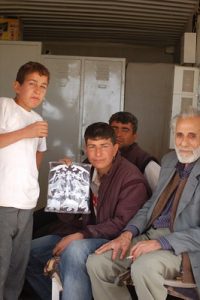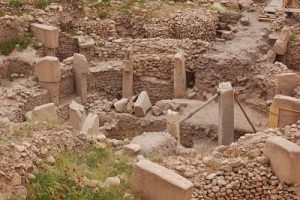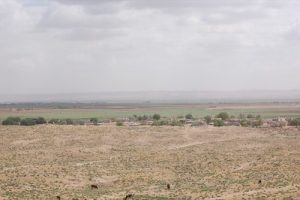Before Gobekli Tepe became an internet sensation due to psuedo-archeologist Graham Hancock, I visited the site in 2008. That was 17 years ago. It was not a tourist site at the time, it was a working archeological dig. I was greeted by the foreman, and I asked if I could take photos. He said yes, and I did. Some of you might recall them. Here is what it looked like then, and here is a link to the photos:
Here is how awful it looks now:
That’s a lot of change. The Turkish government co-opted it for its own reasons and turned it into a Kurdish-region mega-tourist attraction in as a way of asserting some control, but also as a way of dishing out some money to keep the Kurds, at the very least, content. Gobekli Tepe has nothing to do with Turkish history. The site dates back to the Younger Dryas, or, the last Ice Age — it probably dates back further than that. The first interpretation was that it turned our idea of civilization on its head. It went like this: “Before Gobekli Tepe man built the city and then the temple. But at Gobekli they believed the temple came first.” I felt it a compelling reason and I’m a touch saddened it has been revised. But that is how empircal data works. This view has now been revised. Here is a shortish video discussing the dating issues. A key point he makes in his video is that there is real specialization in labor. A division in labor. Not a collection of hunter gathers but proto-civilization, if you will. If you really want to do a deep dive on this very important subject I cannot recommend Ancient Architects highly enough. This video and this video are a great place to begin. What ever you do, do not listen to Graham Hancock. He is full of shit. The bottom line is that Gobekli Tepe is only one site now considered a part of the Taş Tepeler civilization in the highlands of southern Anatolia. There are between 40-80 sites in a 250 square mile area in the highlands above the headwaters of the Balikh River and the Harran Plain–Turkey’s gateway to Mesopotamia–and where the Roman general Crassus died at the battle of Carrhae in 53 BC.
That’s simply huge. And that there was lots of trial and error going on there about domesticating all kinds of things. Plus, pottery has been found and dated at one site to the pre-pottery neolithic! I recommend we rename the pretty pottery neolithic to something else, please?
Last thought, Slovenian political scientist Samo Burja has an absolutely compelling essay based on Gobekli Tepe and other archeological sites on how civilization might be very much older than we currently believe. He speculates there is a real possibility that in our lifetimes we might discover attempts at it close to 100,000 years old. Given what I have seen, I would not be surprised if he were very close to correct.
Give some of the videos a watch if your inclined in the speculation on our origins, like I am.
If you’ve read this far, and you read a lot of this site’s articles, you might wish to Subscribe or donate. The site has over over 3,500 posts, and the site, and Ian, take money to run.




